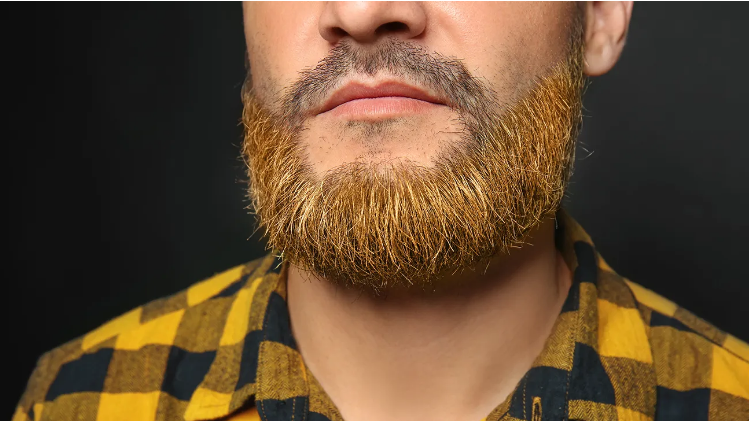Your facial fuzz isn’t immune to the silver fox effect as you age. Yep, your beard can also go grey.
Going grey is all part of the natural process, and some folks welcome the change. But if you’d rather keep it under wraps with a bit of dye, there’s no harm in that either.
Maybe you’ve just changed your hair colour and want your beard to match. In that case, dyeing your facial hair might be on your to-do list.
Whatever your motive, the drill for dyeing your facial fuzz is much like that for your head hair. However, it’s generally best to opt for a product specifically made for beards. While you could use regular hair dye, going for the right stuff can give you a smoother, more even finish.
Types of Beard Dye
When it comes to dyeing your beard, you’ve got two main routes:
- DIY with a boxed dye kit at home.
- Get it done professionally at a salon.
According to Ghanima Abdullah, a cosmetologist and hair expert from the Dominican Republic, pros can mix up a permanent dye that looks more natural than the store-bought versions.
While the salon route is more likely to give you a seamless result, both options will grow out at the same rate.
But let’s talk perks of the DIY job: it’s convenient and won’t break the bank. Just keep your expectations realistic.
Dyeing Your Beard at Home
When picking a dye for home use, Abdullah advises going for a product designed specifically for beards.
“Beard hairs are tougher than the hair on your head,” she explains.
Dyes made for beards are crafted to penetrate these coarser hairs without upsetting the skin on your face, which is often more sensitive than your scalp.
This becomes especially crucial when you’re aiming to cover up those greys. Grey beard hairs are especially resistant, meaning they might not take to regular hair dye as well. Plus, your colour could fade quicker too.
And here’s another reason to stick with beard-specific dye:
How Long Does It Last?
A permanent dye will hang around until your beard grows out or you shave it off.
If you or your barber use semi-permanent dye, expect it to stick around for 3 to 6 weeks, says Abdullah.
Not Loving the Result?
If you’re not thrilled with how your beard turned out post-dye, your best bet is to book in with a professional.
But if you’re feeling DIY-inclined, there are some home remedies worth a shot.
Take this baking soda and water paste, for instance:
- Start with 1 teaspoon of baking soda.
- Add enough water to make a spreadable paste — this might take a few teaspoons. Stir to avoid it getting too runny.
- Slather the paste on your beard and gently massage it in.
- Avoid rubbing too hard or getting it on your skin, as it can cause irritation.
- Leave it on for 15 or 20 minutes.
- Rinse thoroughly.
Removing Dye from Your Skin
If you accidentally get dye on your skin, wipe it off before it sets. Abdullah suggests applying Vaseline around your beard before dyeing to prevent staining and irritation.
If petroleum jelly isn’t your jam, a thick moisturiser or body cream can work as a barrier too.
To tackle dye stains, wash them with soap and water. If they stick around, try coconut oil. Leave it on overnight and rinse in the morning.
“If the stain’s still there, it’s time for the big guns: rubbing alcohol,” says Abdullah.
Here’s how to tackle a stubborn stain:
- Soak a cotton ball in rubbing alcohol.
- Dab at the stained area until it’s gone.
- Wash with soap and water.
- Apply coconut oil to moisturise and soothe your skin.
Product Recommendations
Abdullah suggests henna-based dyes for facial hair, especially if your skin’s on the sensitive side. They take longer to apply but usually give a more natural result.
Here are a few she recommends:
- Grizzly Mountain Beard Dye
- Henna Color Lab Beard Dye
- The Henna Guys Beard Dye
- True Sons Hair and Beard Dye
- Godefroy Professional Hair Color Tint Kit (for spot dyeing)
- Madison Reed Mr. Hair Color
These won’t give a permanent result, but they can make your beard look fuller, Abdullah notes.
Not ready to commit to dye? Just for Men Control GX Beard Wash might be worth a try. It gradually changes your beard colour with daily use.
The Bottom Line
Whether you’re dyeing to switch things up, match your hair, or hide those pesky greys, make sure you’re using the right product. While regular hair dye might technically work on facial hair, it’s not designed for those tougher beard hairs. Plus, it could irritate the more delicate skin on your face.
If you’ve got a skin condition, it’s smart to check with a dermatologist before slapping on the dye.
And remember, always follow the instructions on the packet and do a patch test first.

